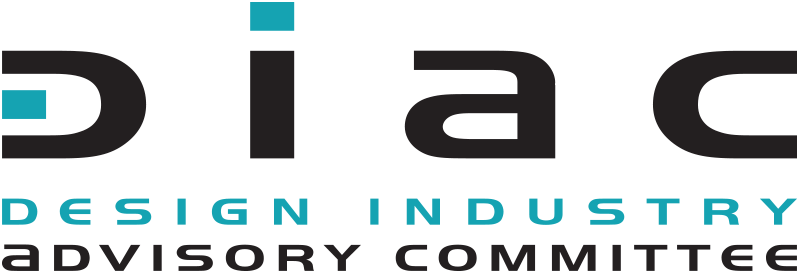In 2021, DIAC published its Design Impacts Framework to demonstrate how positive design interventions in Placemaking can be assessed and measured. In the third phase of this research, DIAC is applying the Framework to projects in other disciplines.
The ZipGarden™ by ZipGrow Inc. – Momentum Product Design
The ZipGarden™ is a small hydroponic system for homes, schools, and small businesses that easily grows herbs, decorative plants, leafy greens, and fruiting plants. Building upon the success of their patented ZipGrow Towers and Farm Wall™ system for DIY growers, ZipGrow Inc. recognized the opportunity to introduce a more aesthetic solution to the consumer market while utilizing the same technology. The vision for the ZipGarden™ was to make a highly productive food growing system within a small footprint that was simple, functional, and highly aesthetic; a system accessible for anyone, regardless of knowledge or experience, to grow fresh food fast regardless of climate or location.
To achieve this vision, Momentum Product Design was challenged to create a compact product that could obscure the functional elements of the technology and seamlessly integrate within the users’ space. The designers addressed this by envisioning the ZipGarden™ as a piece of furniture, capable of living alongside other modern furnishings within a home, school, or small business environment. It was designed to be free standing – not wall mounted or integrated into permanent or semi-permanent infrastructure – which removes a barrier for many users such as renters and individuals with limited technical installation abilities. Considering the ZipGarden™ as a piece of furniture rather than an appliance was critical to the design, making the product appealing and approachable, and ultimately encouraging stronger adoption to bring the company’s vision to fruition.
As a product that enables people to create a sustainable food source for themselves in a simple, versatile, and efficient way, the functionality of the ZipGarden™ was paramount to its success. The primary functional elements such as the Light Emitting Diodes (LEDs), water reservoir, plumbing, pump and aerator had to be configured in a specific way to ensure an idealized growing environment. It was important that water and light get delivered to the seedlings in an effective way; and as such, Momentum had to solve for how the ZipGrow Towers were installed into the unit. The design solution included a modification to the existing ZipGrow Towers which allows the user to hook them onto a structural water pipe. The ZipGrow Towers rotate into position and are aligned by features in the lower vacuum formed drip tray. This alignment ensures the ZipGrow Towers are evenly spaced thereby giving the plants enough room to grow. In addition, the LEDs needed to be positioned to ensure an even spread of light for the plants and to not limit access to the ZipGrow Towers. The design focused on four corner pillars with the two at the back becoming conduit for plumbing and the two at the front deploying features that would allow the LEDs to angle inward, casting an even spread of light as required.
ZipGrow Inc. as a company was a well-established brand in the commercial space. Their flagship product, the ZipGrow Tower, is a core component of many of the world’s most innovative farms. Introducing a consumer-oriented product that could be maintained and operated easily meant introducing new brand elements that would align the ZipGarden™ with its target market: those with an eye on sustainability, with no previous hydroponic experience. The overall design included simple geometric forms, colours, materials, and finishes that made the ZipGarden™ appealing and easy to use. With previous products being more utilitarian, the ZipGarden™ allowed ZipGrow Inc. to extend their market substantially into the consumer space and enhance their overall brand identity.
Sustainable, localized food production is a key environmental benefit, and the ZipGarden™ was designed to take advantage of this. By growing and harvesting food at home, school, or work, complex supply chains are removed, eliminating the need for food to travel long distances over extended periods of time. This effectively reduces carbon emissions and allows produce to last longer without going to waste. The ZipGarden™ was also designed for efficiency, using much less water than traditional systems and very little electrical energy to harvest the equivalence of a 100 square foot garden in only 20 cubic feet of space. Furthermore, the ZipGarden™ was designed to be user-assembled, allowing for smaller sub-assemblies to be packaged more efficiently, ultimately reducing shipping costs and the overall impact on the environment.
Aside from these environmental benefits, the ZipGarden™ promotes health and wellbeing by offering fresh, nutritious produce year-round and bringing a positive ambiance into a living or working environment. The design of the ZipGarden™ was intentional in presenting the plants in an open display, incorporating biophilia and its impact on how people feel. The glowing lights add brightness to the space and the warm wood tones serve to reinforce its connection to nature. The ZipGarden™ is also used in schools as a teaching tool to encourage young people to think about where their food comes from, engage with food production, and understand the benefits of healthy food choices. A curriculum program for primary educators is being launched in Spring 2023 to complement the system.
Momentum Product Design was able to support ZipGrow Inc. in their vision to make year-round indoor food production attractive and accessible by designing around the core functionality of the product, establishing new brand elements that drove ZipGrow Inc. further into the consumer market, considering the environmental impact of the product and its assembly, and emphasizing design characteristics that promote health and wellbeing.

